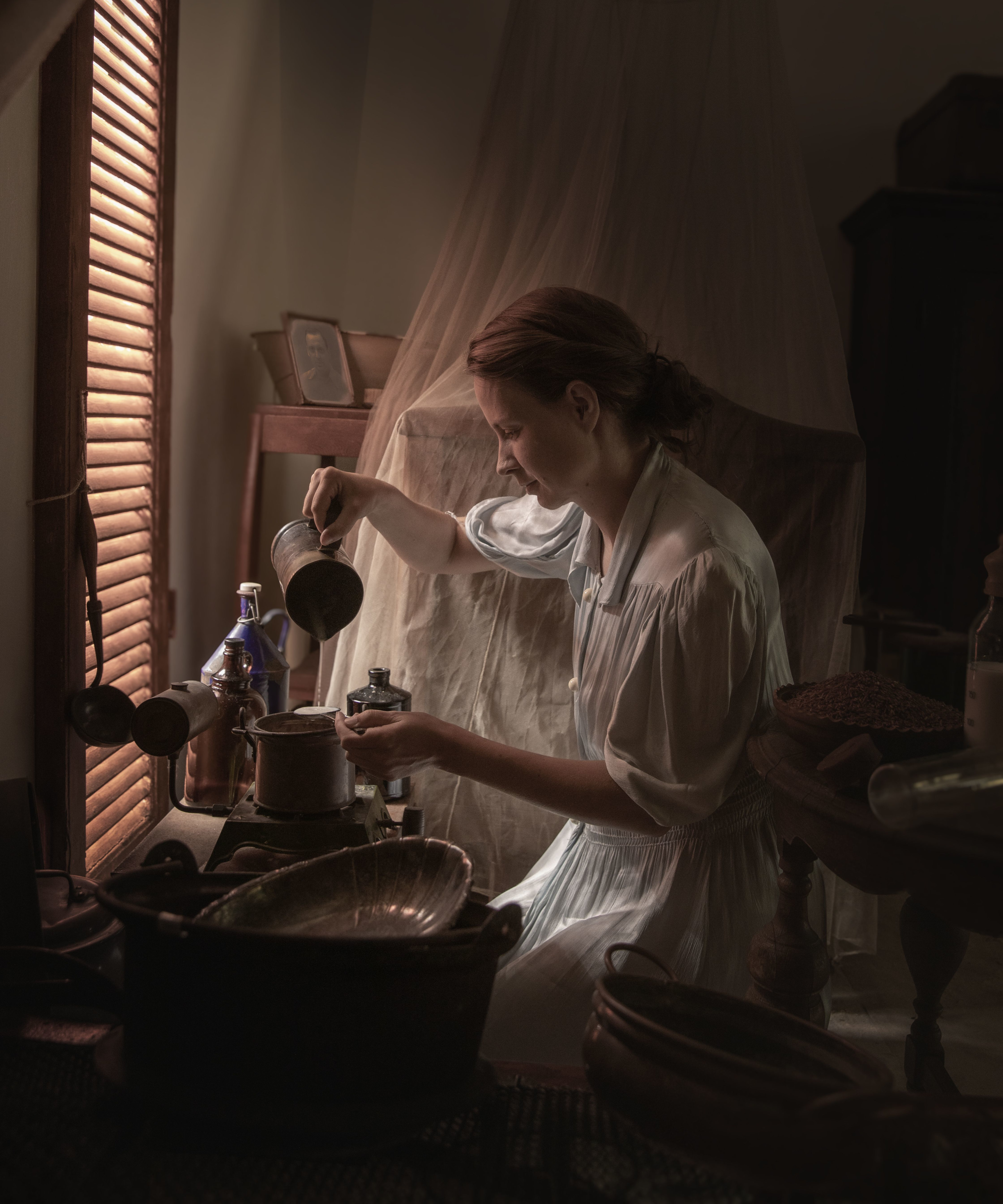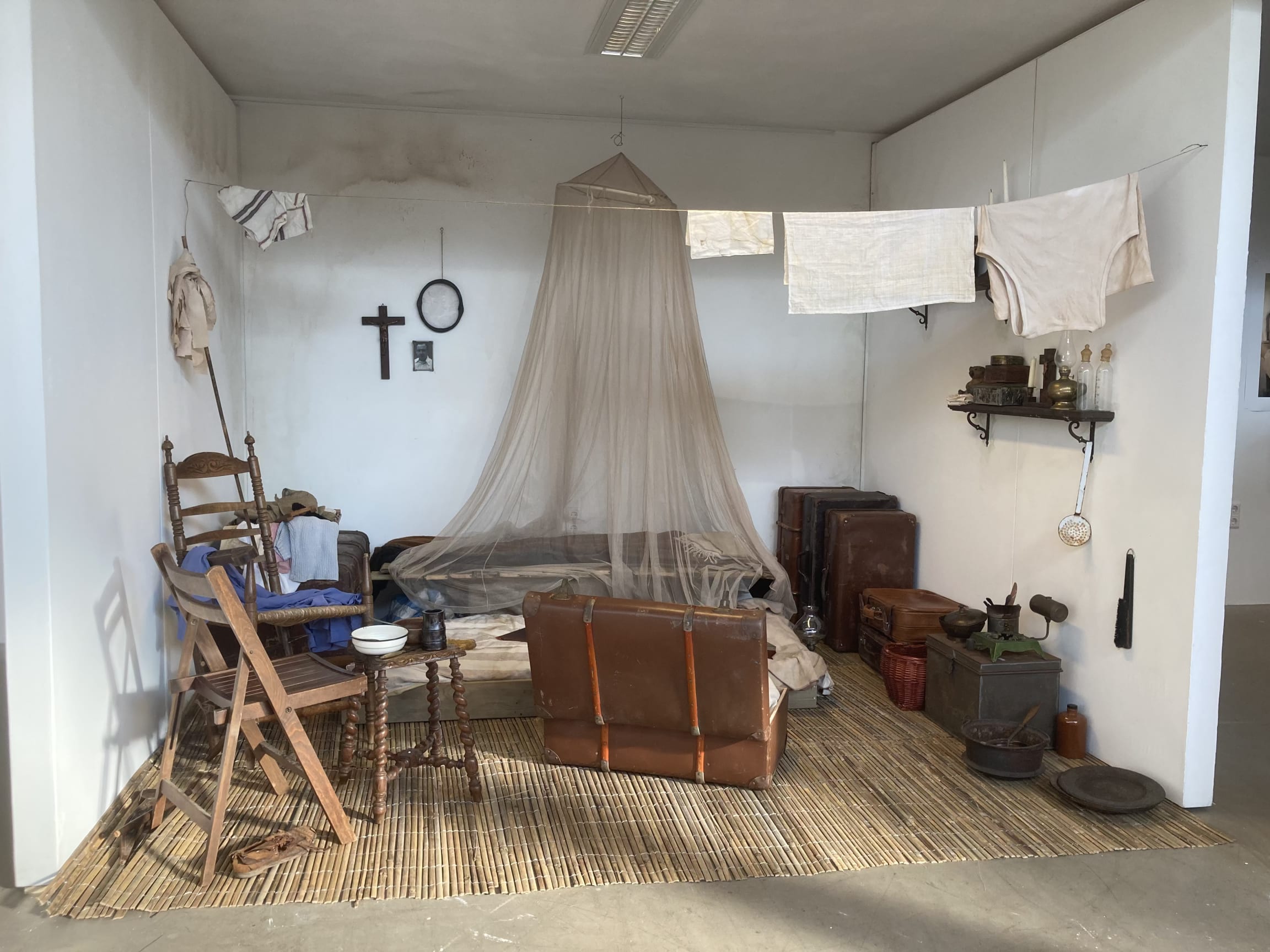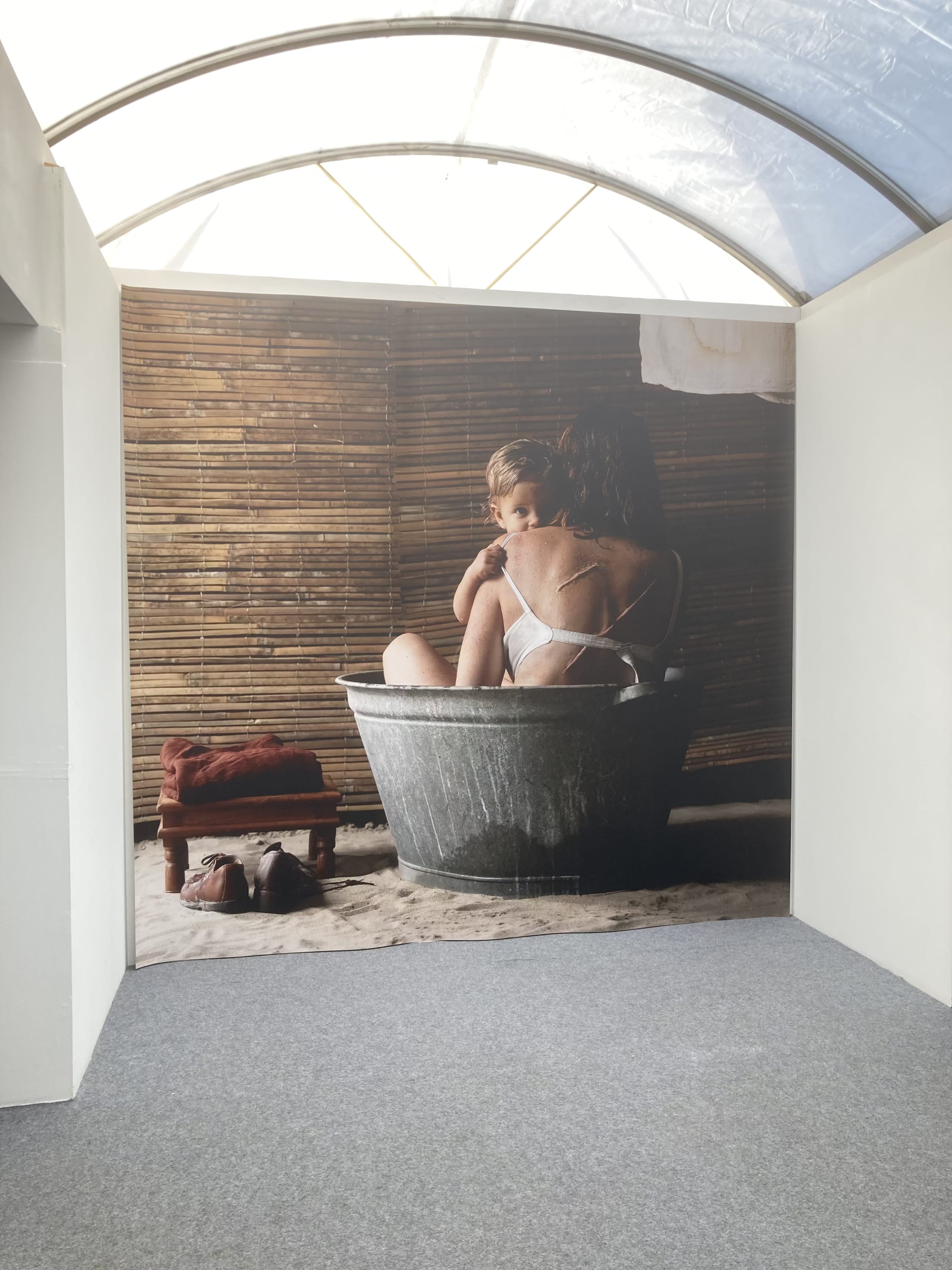19 september 2025, Flor Linckens
My dearest Teun: how a granddaughter found her grandmother’s voice
How do you keep memories alive that have been kept quiet for generations? And how do you give them a place as a later generation? Photographer Tahné Kleijn (Studio Seine) seeks answers in ‘Mijn liefste Teun’ ('My dearest Teun'), her solo exhibition at the Pennings Foundation in Eindhoven, that will be on view until 22 November. In this series, the artist weaves her family history together with larger questions about war, colonialism and silence. The result is a body of work that feels both intimate and universal.
Kleijn has developed a distinctive and vulnerable visual language in which personal stories merge with broader social themes, including the prejudices attached to them. Her work touches on subjects such as family, grief, poverty, loyalty and the transmission of trauma between generations. Visually, she draws inspiration from the light and composition of seventeenth-century painting, which she translates into contemporary genre scenes and portraits. Her practice is marked by extensive research and meticulous staging, which allows her work to shift between documentary and fine art. With "Mijn liefste Teun" she opens a window onto a family history that is inseparably linked to the Dutch colonial past and the Second World War.
At the heart of the exhibition lies the story of her grandmother Pieta Kleijn, who died young and whom Kleijn therefore never truly knew. During the Japanese occupation of the Dutch East Indies, Pieta was imprisoned in the women’s camp Tjideng in Batavia, now Jakarta. There she gave birth to her first child, a son who grew up without medical care and on little food. At great personal risk Pieta secretly kept diaries and a baby book. She recorded their lives not only for herself, but also for her husband Teun, who was at sea and would not discover that he had become a father until years later. To share those first tender moments with him, she wrote on whatever scraps she could hide: notes concealed behind photographs in frames, or on the inside of a trunk. After the war she copied these fragments into diaries, a cookbook and a baby book. These writings form the foundation of Kleijn’s new work.
The exhibition brings together more than forty photographs, complemented by diary excerpts and the original notebooks. For months, Kleijn recreated scenes from the past in painstakingly constructed studio sets, guided by diary entries, hundreds of letters, historical sources and a photo album filled with annotations. This reconstruction makes the emotional weight of the situation palpable once more, saturated with symbolism and feeling. Kleijn photographed herself as Pieta and her husband as Teun, while her children and other friends and acquaintances also played a role. The resulting images do not claim to be purely factual but instead combine association and imagination to convey the emotional truth of the period. The photographs have a cinematic quality and form an artistic reconstruction of the past, where the intimacy of family history intersects with broader historical narratives.
The choice of opening date also carries special meaning. On 15 August 1945 Japan surrendered, bringing an end to the internment camps. By opening her exhibition precisely eighty years later, Kleijn connects her family’s personal story to a collective memory and underlines the importance of bringing silent histories into the open.
With ‘Mijn liefste Teun’, Kleijn creates space for stories that remained unspoken for decades. The exhibition shows how the experiences of Indo-Dutch families and camp survivors barely found a place in post-war society, where attention centred largely on the German occupation and the hunger winter. Today, the colonial history of the Netherlands in Indonesia is viewed through different eyes, and this broader context is also present in the exhibition through publications, films and an accompanying programme. Yet Kleijn invites the viewer not only to engage with the larger themes of war, colonialism and remembrance, but also with the vulnerability of a young mother forced to survive under extreme circumstances. The series and the exhibition thus function as both a personal tribute and an invitation to reflect on how history continues to reverberate in the present, and how memory shapes the bond between generations. They create a dialogue between the silence of the past and the need to speak today.
Tahné Kleijn was born in Helmond in 1990, where she still runs her studio. She studied photography at AKV|St. Joost in Den Bosch. Her graduation project "Soo d'Oude Songen, Soo Pypen de Jongen" was immediately picked up by NRC Next and VPRO and was part of the ‘Best of Graduates’ exhibition at Galerie Ron Mandos. Since then, her work has been shown at Museum MORE, Museum Helmond and Stedelijk Museum Breda. In 2019 and 2020 she was appointed city artist of Helmond. Her photographs are held in the collections of LAM Lisse, Museum Helmond and the Dutch government.




